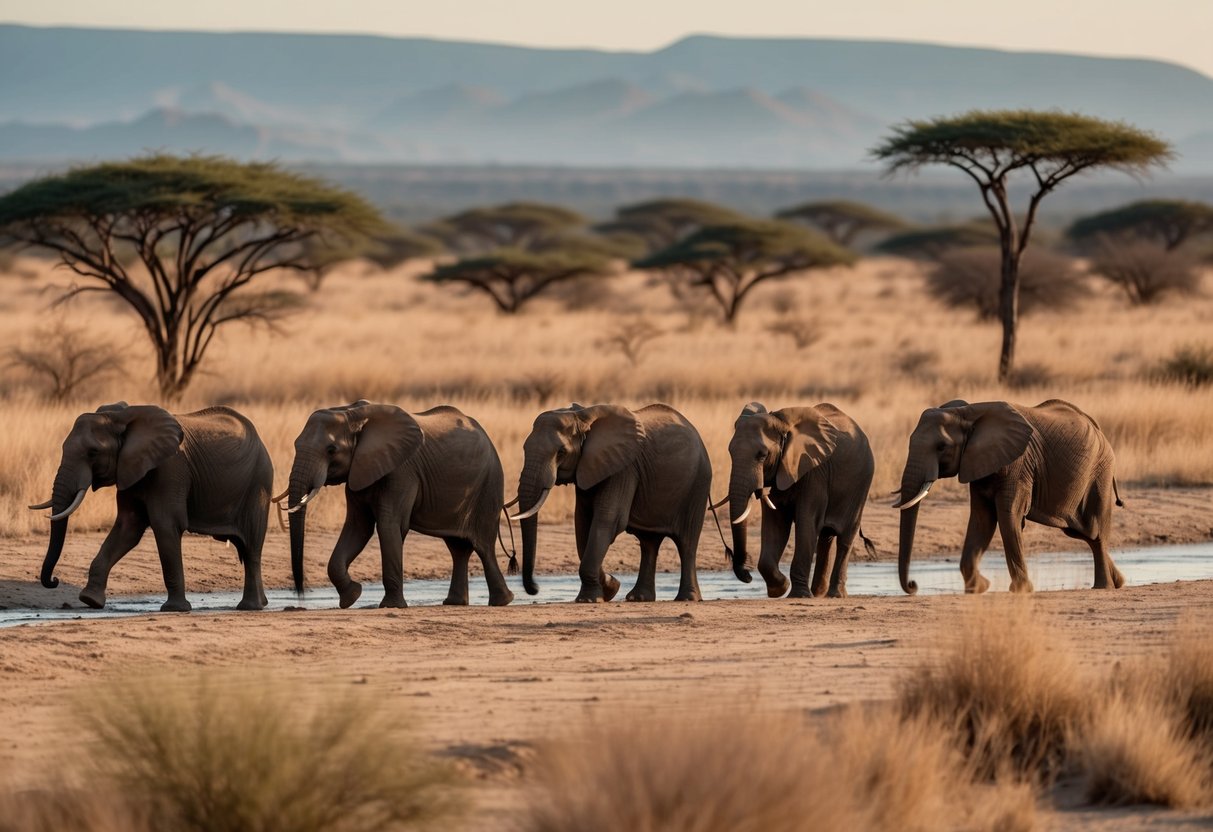
Beyond Samburu: Extending Your Kenyan Safari
Exploring Kenya beyond Samburu offers a unique blend of landscapes and wildlife experiences. This section highlights nearby reserves and how to integrate Samburu into a broader Kenyan tour.
Visiting Nearby Reserves and Attractions
Just beyond Samburu lies the breathtaking Laikipia Plateau, an area filled with diverse wildlife and open skies. Visitors can enjoy game drives that often feature elephants, lions, and the rare African wild dog. This region is also renowned for its conservation efforts, providing both natural beauty and insight into sustainable tourism practices.
South of Samburu, Mount Kenya stands as a towering presence. Climbing or simply visiting this majestic mountain offers spectacular views and a chance to explore the surrounding montane ecosystem. The varied landscapes around Mount Kenya contain everything from bamboo rainforests to open moorlands, providing habitats for unique species like the colobus monkey and Mount Kenya hyrax.
Located close by, Shaba National Reserve presents a contrasting landscape of arid savannahs and rugged terrains. Shaba is known for its volcanic formations and a rich array of wildlife, including Grevy’s zebra and reticulated giraffe. The reserve offers an adventurous setting for those seeking to experience Kenya’s lesser-known, untamed wilderness.
Integrating Samburu with a Kenyan Tour
To enrich a Kenyan adventure, pairing Samburu with the iconic Masai Mara can create a compelling safari itinerary. The Masai Mara is famed for the Great Migration, where millions of wildebeests and zebras cross its plains. Travelers to this region can anticipate remarkable wildlife sightings and cultural experiences with the Masai people.
A tour that encompasses Samburu, the Laikipia Plateau, and Masai Mara offers both contrast and continuity, allowing visitors to observe varying ecosystems and wildlife. Combining these destinations provides a comprehensive picture of Kenya’s vast and varied landscapes, from the arid north to the lush southern savannahs. Tailoring a trip to include these locations ensures a richly layered exploration of this East African gem.
Samburu’s Role in East Africa’s Ecosystem
Samburu is a vital component of East Africa’s diverse ecosystem, offering a unique landscape that differs from the well-trodden paths of other safari destinations. Surrounded by the dramatic backdrop of Mount Kenya and the expansive Laikipia Plateau, Samburu provides critical habitats for a wide array of wildlife that is endemic to the region.
The Ewaso Ngiro River flows through Samburu, acting as a lifeline for both wildlife and vegetation. It supports species like elephants, lions, and the rare Grevy’s zebra, facilitating a complex web of life that sustains the biodiversity in this part of Kenya. This river is crucial for animals during dry spells, conserving the balance of nature.
Rich in both flora and fauna, Samburu is home to a number of endangered and rare species, highlighting its importance in conservation efforts. Its semi-arid savannahs and unique ecosystems complement the more verdant landscapes found elsewhere in Kenya, adding depth to the broader East African environment.
The park’s geographical positioning not only supports a varied array of biological diversity, but it also forms a corridor for migratory species between regions such as the Laikipia Plateau and beyond. This makes Samburu a significant node in the network of East African ecosystems, demonstrating its ecological value and integral role in maintaining regional biodiversity.